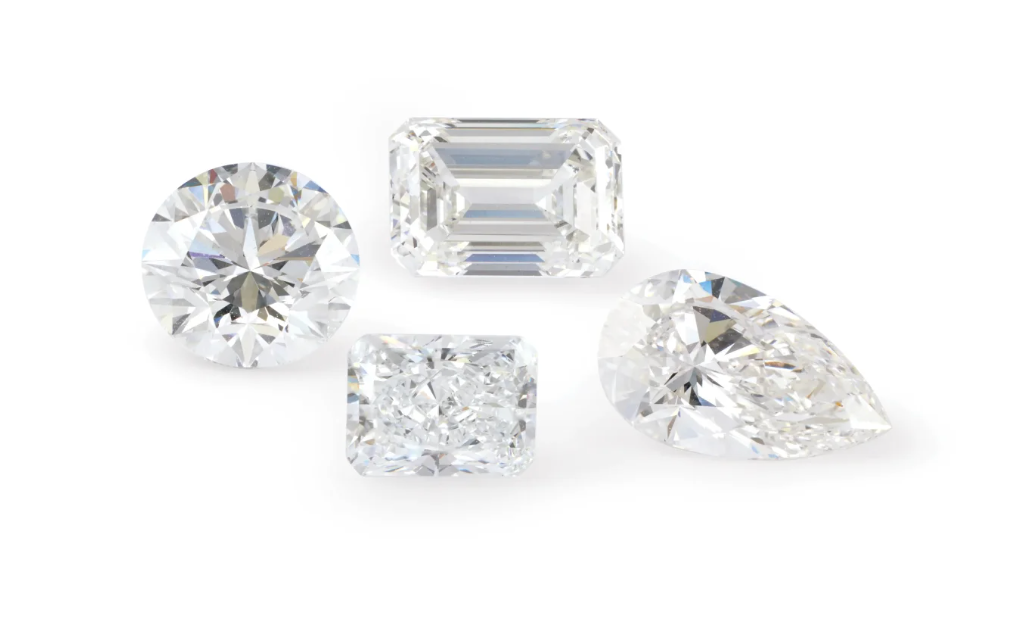When you picture a diamond, you’re really picturing carbon atoms locked in a perfect crystal lattice. Whether that lattice forms two billion years beneath Earth’s mantle or over a few weeks in a modern reactor, the finished gem is—atom for atom—the same stone.
1. Real Diamonds, Lab-Perfected
The Gemological Institute of America (GIA) confirms that laboratory-grown diamonds have “the same crystal structure, resulting in nearly the same chemical, optical and physical properties as natural diamonds.” To the unaided eye—and even to most jewellers—only advanced instruments can tell them apart.GIA 4Cs
GIA’s own gem-identification guide echoes this point: because lab-grown diamonds are “essentially chemically and optically the same as natural diamonds,” traditional tests can’t separate the two.GIA
In other words, every C, V VS2, or Ideal-cut grade that applies to a mined diamond applies in exactly the same way to its lab-grown counterpart.
2. Why the Planet Prefers a Lab
Diamond mining moves mountains—literally. Open-pit and alluvial operations can displace hundreds of tonnes of earth for a single polished carat, draw down local water tables, and leave behind vast rock piles that must later be remediated. GIA notes that “diamond mining has an impact on the environment,” which is why “marketing efforts portray laboratory-grown diamonds as a ‘green’ alternative.”GIA
While GIA also reminds us that both diamond origins have environmental costs, the type of impact is fundamentally different. A controlled lab avoids large-scale land disturbance, tailings dams, and open pits; its footprint is measured in square metres, not square miles. Energy use is the primary variable, and many growers now locate reactors next to renewable power sources to shrink their carbon balance even further.
3. Sustainable Luxury—Within Reach
Because reactors can scale production without blasting new earth, lab-grown diamonds skip much of the heavy capital cost embedded in mined stones. That cost efficiency lets brands (like ours) operate on razor-thin margins and still offer impeccably graded gems at prices that would have been unthinkable a decade ago. The result: you don’t have to wait for an anniversary ending in “0” to own heirloom-quality brilliance.
4. A Gem That Carries Legacy, Not Luggage
Diamonds are prized not only for their fire but for their permanence; they survive generations, becoming chapters in a family’s story. Choosing a lab-grown diamond preserves that tradition and the landscapes future generations will inherit. It’s the same hardness, the same refractive sparkle—just without the environmental baggage.
5. The Expert Take
-
100 % Diamond: Independently graded for the same 4Cs as mined stones, backed by the world’s most trusted gem laboratory.GIA 4Cs
-
Lower Impact: No open pits, less water, drastically less earth moved; energy use can be sourced renewably.GIA
-
Greater Accessibility: Streamlined supply chains mean you pay for the gem, not the geology.
-
Enduring Value: A diamond’s brilliance—and its ability to mark life’s milestones—doesn’t depend on a mine of origin.
The Bottom Line
Lab-grown diamonds are real diamonds. They deliver identical beauty and durability while giving conscientious consumers a lighter environmental footprint and a lighter price tag. For those who want luxury today and a healthier planet tomorrow, the choice is crystal clear.



